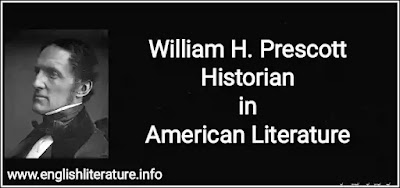Also Read
Three natives of Massachusetts and graduates of Harvard, William H. Prescott, John Lothrop Motley, and Francis Parkman, wrote history in such a way as to entitle it to be mentioned in our literature. We cannot class as literature those historical writings which are not enlivened with imagination, invested with at least an occasional poetic touch, and expressed in rare style. Unfortunately the very qualities that render history attractive as literature often tend to raise doubts about the scientific method and accuracy of the historian. For this reason few histories keep for a great length of time a place in literature, unless, like Irving's Knickerbocker's History of New York, they aim to give merely an imaginative interpretation of a past epoch. They may then, like Homer's Iliad, Shakespeare's Macbeth, and some of Irving's and Cooper's work, be, in Celtic phrase, "more historical than history itself." History of this latter type lives, and is a treasure in the literature of any nation.
William H. Prescott, (1796-1859).—Like Washington Irving, Prescott was attracted by the romantic achievements of Spain during the years of her brilliant successes, and he wrote four histories upon Spanish subjects: a History of the Reign of Ferdinand and Isabella (1837), a History of the Conquest of Mexico (1843), a History of the Conquest of Peru (1847), and a History of the Reign of Philip II. (1855-1858), the last of which he did not live to complete.
Prescott was a careful, painstaking student. He learned the Spanish language, had copies made of all available manuscripts and records in Europe, and closely compared contemporary accounts so as to be certain of the accuracy of his facts. Then he presented them in an attractive form. His Ferdinand and Isabella and the part he finished of Philip II. are accurate and authoritative to-day because the materials which he found for them are true. The two histories on the Spanish conquests in the New World are not absolutely correct in all their descriptions of the Aztecs and Incas before the arrival of the Spaniards. This is due to no carelessness on Prescott's part, but to the highly colored accounts upon which he had to depend for his facts, and to the lack of the archaeological surveys which have since been carried on in Mexico and Peru. These two histories of the daring exploits of a handful of adventurers in hostile lands are as thrilling and interesting as novels. We seem to be reading a tale from the Arabian Nights, as we follow Pizarro and see his capture of the Peruvian monarch in the very sight of his own army, and view the rich spoils in gold and silver and precious stones which were carried back to Spain. In relating the conquest of Mexico by Cortez, Prescott writes the history of still more daring adventures. His narrative is full of color, and he presents facts picturesquely.
